BaseStation Directional Antenna Kit Guide
The communication range of the BlueBoat BaseStation can be boosted by installing one of two BaseStation Directional Antenna Upgrade Kits. The antenna kit comes in either a panel antenna version or a Yagi antenna version.
This guide explains the differences between the antennas, shows how to install them on the BaseStation, and provides instructions for setting the correct gain for each antenna.
Omnidirectional Antenna vs. Panel Antenna vs. Yagi Antenna
By default, the BaseStation uses an omnidirectional antenna. An omnidirectional antenna transmits and receives signals equally from all directions, making it a great general-purpose antenna for short-range communication. Directional antennas can get significantly longer range by focusing the signal only in one direction.
The panel antenna and the Yagi antenna are both directional antennas but have different ranges and beamwidths.
Panel Antenna
The panel antenna offers a mid-range upgrade with a 40-degree horizontal beamwidth.
- The practical communication range with the panel antenna is about 500 meters. Actual communication range may be higher or lower depending on operating conditions and environmental factors.
- The panel antenna has wider signal coverage than the Yagi antenna.
- The 40-degree beamwidth covers a broader operational area, allowing the BlueBoat to move over a larger area while maintaining communication without the need to reposition the antenna.
Yagi Antenna
The Yagi antenna provides the longest range upgrade but it has a narrower, 25-degree horizontal beamwidth.
- The practical communication range with the Yagi antenna is about 800 meters. Actual communication range may be higher or lower depending on operating conditions and environmental factors.
- The Yagi antenna has narrower signal coverage than the panel antenna.
- The 25-degree beamwidth covers a smaller operational area. If the BlueBoat operates over a wide area, it may lose communication if it travels outside the antenna’s coverage, requiring you to realign the antenna.

Installing the Antennas
The antennas replace the standard omnidirectional antenna on the BaseStation, so you will have to remove that first.
1. Make sure the BaseStation is powered off before removing the antenna. Never power on the BaseStation without an antenna connected as this can damage the router inside.
2. Remove the omnidirectional antenna from the BaseStation.
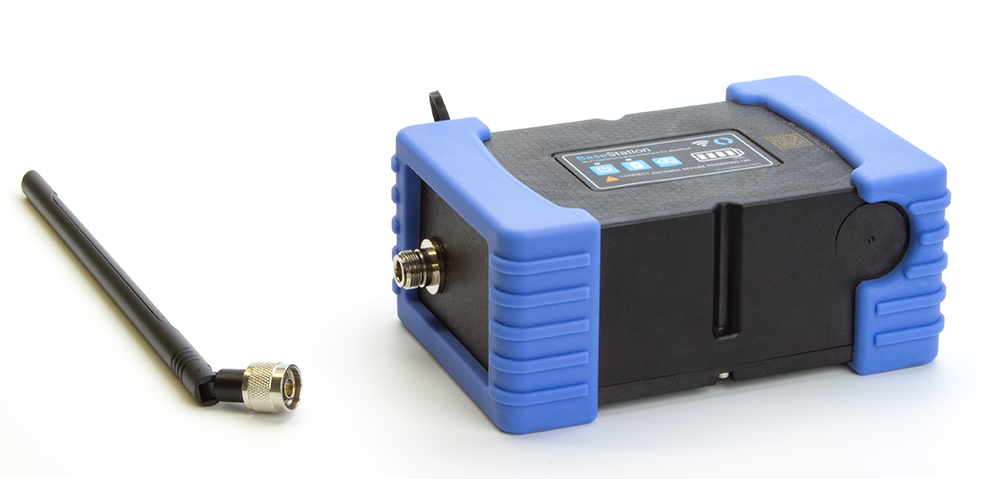
Installing the Panel Antenna
The panel antenna is super simple to install:
1. Install the included male-to-male adapter on the panel antenna.
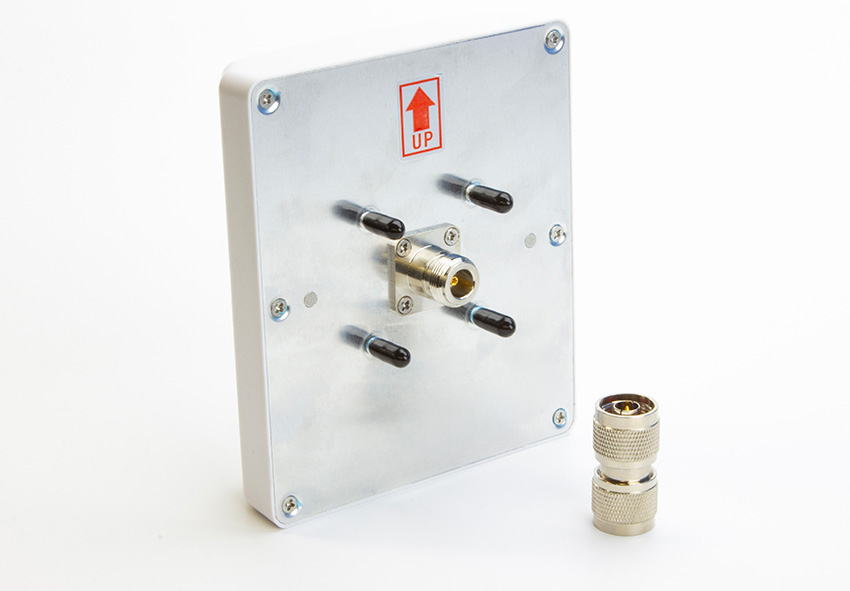
2. The back of the panel antenna has a label that indicates which side is up. Install the antenna onto the BaseStation, making sure to keep it the right way up.
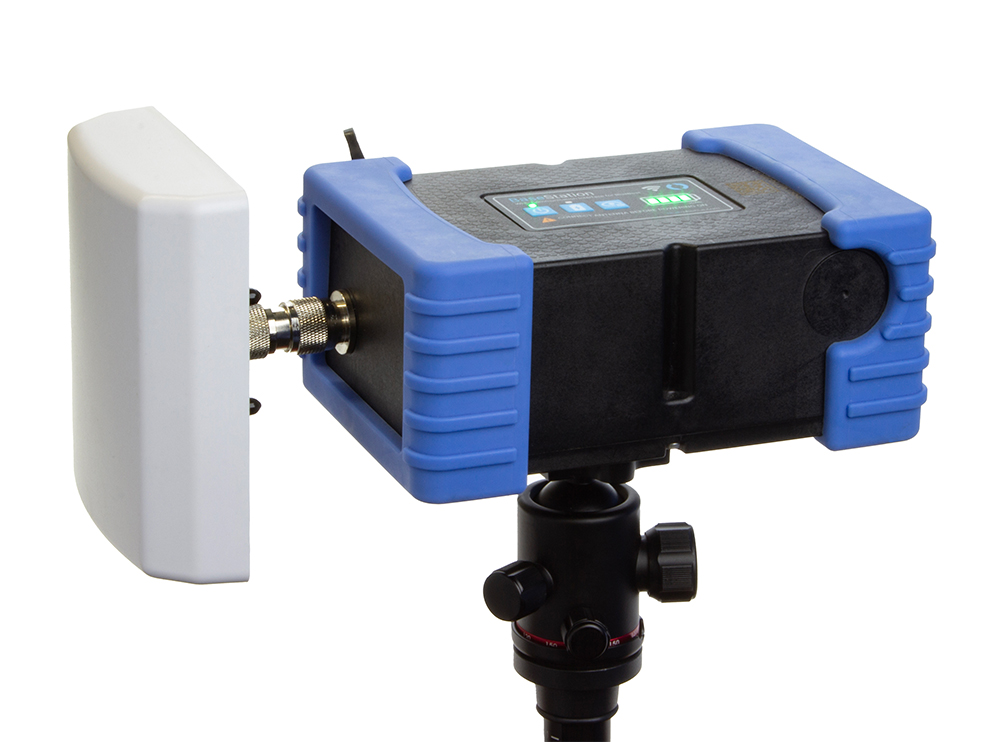
Installing the Yagi Antenna
You will need a 5 mm hex driver to install the Yagi antenna.
1. Use the 5 mm hex driver and included M6x10 screws to install the mounting bracket to the mounting holes on the bottom of the BaseStation. Use the mounting holes that are closest to the antenna connector.
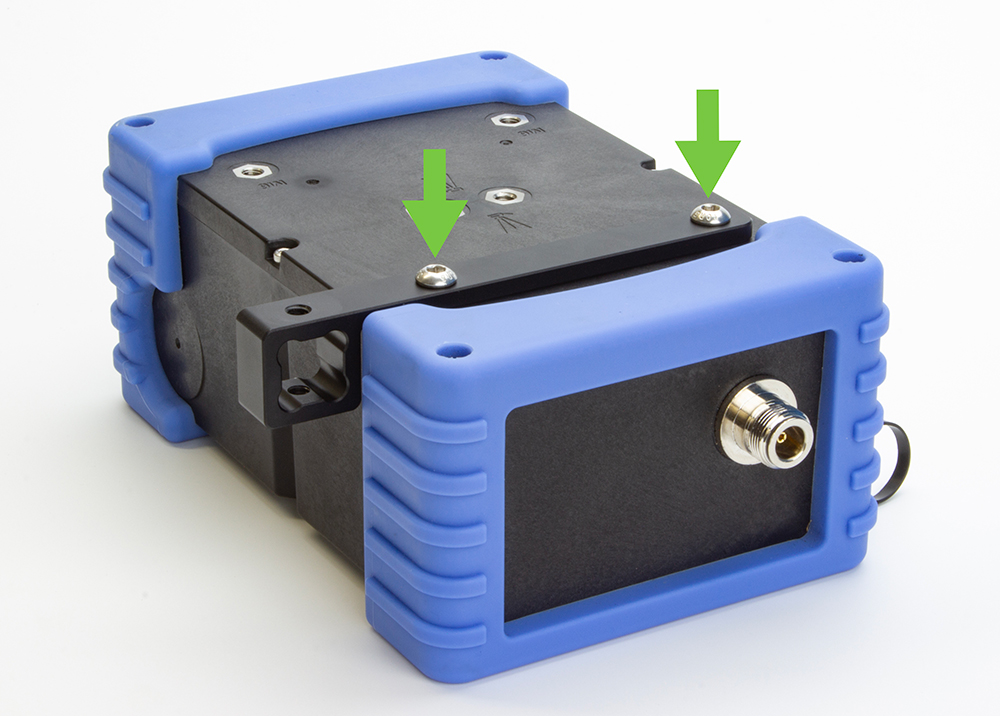
2. Install the included male-to-male adapter onto the Yagi antenna’s cable.
3. Insert the Yagi antenna into the square hole in the mounting bracket so the elements, the small metal rods, are oriented vertically.
4. Use the thumb screw to secure the antenna in the bracket and connect the cable to the BaseStation.
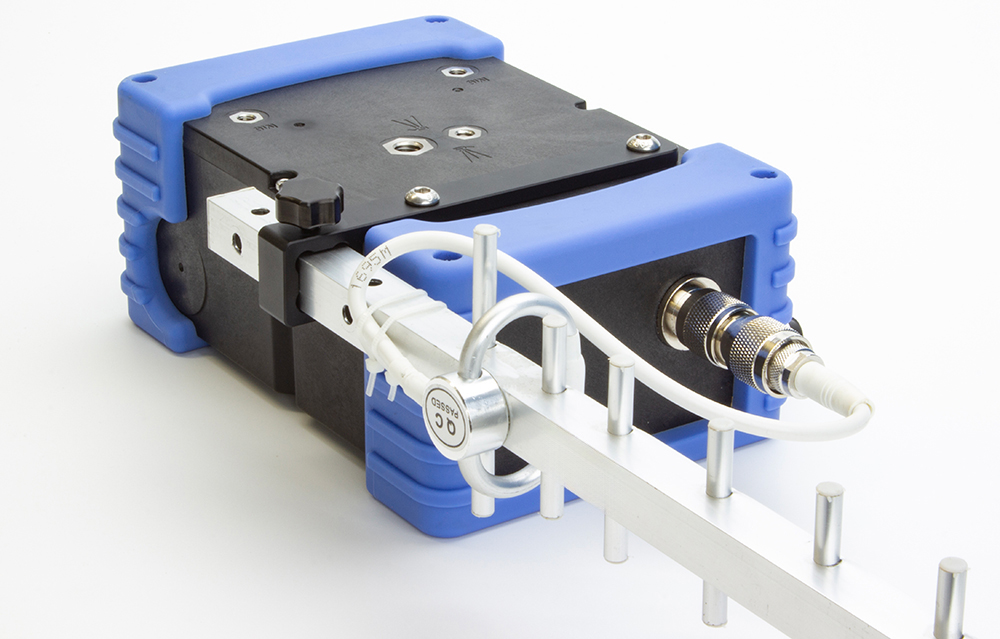
The BaseStation is upside down in this picture to better show all the connections.
Using a Tripod
The BaseStation should be mounted on a tripod that is at least 1.5 meters (59 inches) tall. For best performance, get the tallest tripod you can practically manage as elevation is the best way to maximize antenna communication range. Any tripod that uses standard ¼-20 UNC or ⅜-16 UNC tripod mounts is compatible with the mounting points on the bottom of the BaseStation.
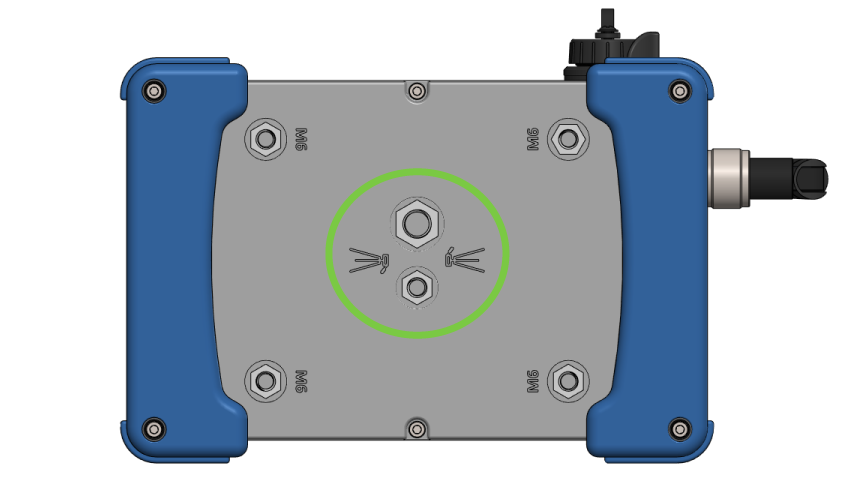
Setting the Antenna Gain
- If you are setting up a new BlueBoat and BaseStation for the first time, follow the instructions in the BlueBoat Software Setup guide instead and skip this section.
- If you have previously setup the BlueBoat and BaseStation and are upgrading the BaseStation antenna, follow these instructions to configure the BaseStation antenna gain setting. You do not need to make any changes to the BlueBoat antenna gain setting.
1. Connect your computer to the BaseStation. If you don’t know how to do that, check out the BlueBoat Software Setup guide.
2. In a web browser, type 192.168.2.3 to access the wireless router inside the BaseStation. From the web interface, click on WebFig from the upper right corner.

3. Click on Wireless from the left sidebar then select the wlan1 interface.

4. Scroll down until you see the Antenna Gain field and enter the value listed for the antenna you are using and the country you are operating in from the table below.
| Country | Stock Omnidirectional Antenna Gain | Panel Antenna Gain | Yagi Antenna Gain |
|---|---|---|---|
| United States | 0 | 0 | 1 |
| Canada | 0 | 0 | 1 |
| All other countries | 6 | 12 | 16 |
| These gain settings account for a 1 dBi signal loss through the antenna coupling and connector. | |||
5. Scroll back to the top of the page and click on OK to save the setting.

BaseStation Antenna Range and Positioning
| Tested Range - United States Settings | Tested Range - ETSI Settings | |||||||||
| Stock Antenna | Panel Antenna | Yagi Antenna | Stock Antenna | Panel Antenna | Yagi Antenna | |||||
| Range (m) | Range (m) | % Increase | Range (m) | % Increase | Range (m) | Range (m) | % Increase | Range (m) | % Increase | |
| Average | 498 | 905 | 80% | 1117 | 123% | 332 | 490 | 46% | 623 | 90% |
| * Data was collected under the following conditions: - Calm sea state - Low to medium signal interference - 3 to 10 meters of BaseStation elevation |
||||||||||
|---|---|---|---|---|---|---|---|---|---|---|
The communication range of an antenna is highly dependent on the operating conditions and environment. All the following are factors that will affect range performance while using the BaseStation:
- Local regulations. Most countries have regulations that limit the EIRP (Effective Isotropic Radiated Power) of an antenna. If a country has low EIRP limits, it restricts the amount of power that can be transmitted from an antenna, reducing the effective range of the antenna. In countries with higher EIRP limitations, antennas can transmit more power, leading to a longer range and better signal strength.
- Line of site. The BaseStation antenna requires a clear line of sight to the BlueBoat. Obstructions like buildings, trees, etc. will block the signal and significantly reduce range.
- Weather. Heavy rain, fog, snow, or other inclement weather can cause signal attenuation and reduce range.
- Sea state. Rough sea conditions like heavy swells and waves can block or reflect the antenna signal. It can also cause the BlueBoat to pitch and roll more which may misalign its antenna and cause signal loss.
- Interference. Other nearby wireless networks, signals, devices, etc. can cause interference and reduce signal quality and range.
- BaseStation elevation. Raising the BaseStation is the best way to increase range. The lower the BaseStation is to the ground, the more likely the signal will be blocked by ground level obstructions or waves, or bounce off the water’s surface.
With all that in mind, the following are some guidelines for positioning the BaseStation to maximize range performance:
- Elevate the BaseStation by mounting it on a tall tripod. Any tripod that uses standard ¼-20 UNC or ⅜-16 UNC tripod mounts is compatible with the mounting points on the bottom of the BaseStation.
- Seek higher ground. In addition to using a tripod, setting up the BaseStation at a higher elevation, like a cliff overlooking the area of operation, will significantly increase range performance.
- Set up the BaseStation where it will have a clear line of sight to the BlueBoat. Buildings, trees, or other obstructions will block the signal.
- Always orient the BaseStation so the antenna is facing in the direction of the BlueBoat.
- If you are using the stock omnidirectional antenna, it must always be positioned vertically. Do not tilt the antenna towards the BlueBoat, this will misalign the signal and reduce the range performance.
Feedback
We’re always working to make our guides, software, and user experience even better. If you have any ideas on how we can improve this guide, feel free to let us know here.

